Pros: Exceptional storage and cargo space; unique second-row functionality; refined ride; versatile and capable TrailSport; advanced AWD
Cons: Subpar acceleration with lackadaisical transmission and engine response; so-so driver assistance tech
Admittedly, the 2024 Honda Pilot is at its most appealing when gussied up as the version pictured here: a TrailSport in Diffused Sky Blue Pearl that had strangers stopping us to compliment our excellent automotive choice. Thanks, but it’s not ours. Making any 2024 Pilot yours would be a smart idea, though. It’s one of our top three-row crossover SUV choices, along with the Kia Telluride and Hyundai Palisade, thanks to its abundant space, clever storage and general well-rounded nature. It just checks off so many boxes, while looking a whole lot better than its anonymous blob of a predecessor.
Perhaps the biggest differentiator is the Pilot’s unique second-row seat design. The center seat can be removed and placed in the underfloor storage area behind the third row, leaving captain’s chairs and pass-through behind. There’s no need to choose between seven- or eight-passenger seating (although the TrailSport’s full-size all-terrain spare shrinks the storage area enough to make the feature impossible). This is just one of many clever features inside the Pilot, and while other competitors may be more luxurious, more powerful or more engaging to drive, we think the Pilot’s well-rounded excellence will make it an overall better choice for more people.
Interior & Technology | Passenger & Cargo Space | Performance & Fuel Economy
What it’s like to drive | Pricing & Trim Levels | Crash Ratings & Safety Features
What’s new for 2024?
After being completely redesigned last year, the Pilot is unchanged for 2024.
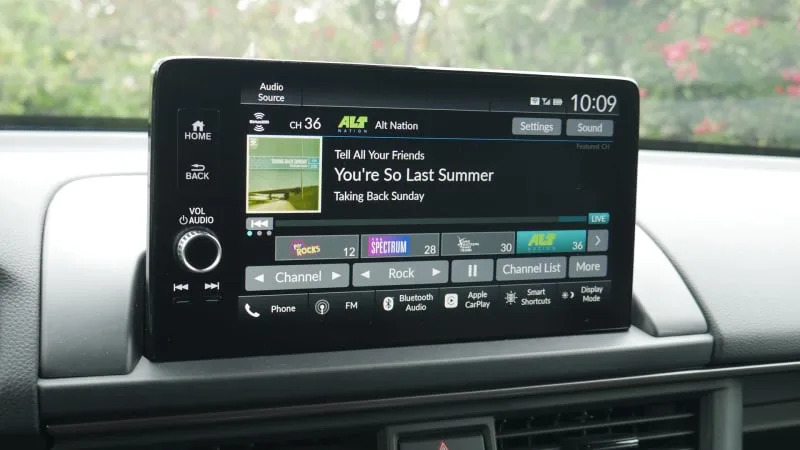

What are the Pilot interior and in-car technology like?
After sitting in a Hyundai Palisade, the Pilot may come across as a bit plain. There’s no showy trim or fanciful lighting. On the other hand, there is an elegance to its minimal adornment and crisp horizontal lines. It’s reminiscent of Land Rover interiors – clean, functional, timeless. It’s also much better than what was there in the last Pilot (and what survives in the Passport).
The Pilot interior is ultimately all about clever packaging and thoughtful design. In terms of storage, the front center console features a large, grippy flat space for phones or whatever, the doors have bins as well as bottle holders, there’s a little shelf in the dash, and the front seatbacks have sleeves built into them to hold your phone. There’s also clever storage in the cargo area, including a double-sided floor with carpet on one side and washable plastic on the other, but we’ll address the rest of the cargo area in the next section.
In terms of technology, the Pilot offers two touchscreens. The base unit measures 7 inches and is rather rudimentary in terms of its functionality and appearance. We like its physical buttons/knobs, though, and it runs both Apple CarPlay and Android Auto. Those get upgraded to wireless connectivity starting with the EX-L trim, which is also the first trim to get a 9-inch touchscreen with enhanced graphics and functionality. It certainly isn’t as impressive as what you’d find in a Palisade, Kia Telluride and Jeep Grand Cherokee L, but it’s functional and generally vice free. Parents should also appreciate its CabinTalk in-car P.A. system that lets you broadcast your voice through the rear speakers. Complementing it is a convex rear seat spy mirror to keep an eye on their reactions.



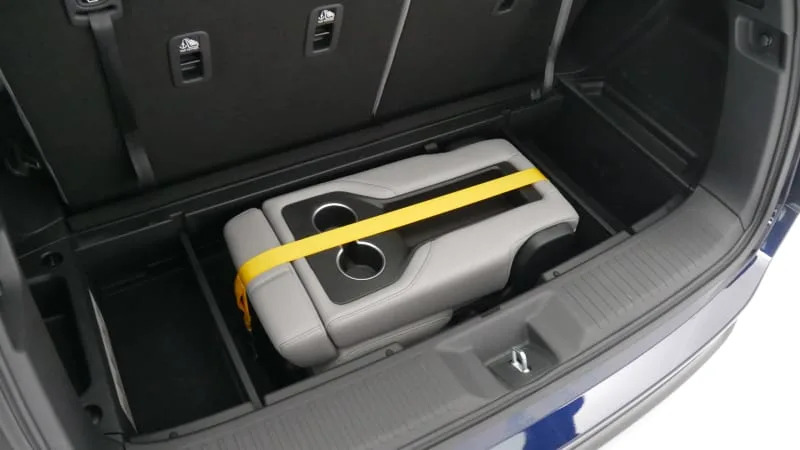
How big is the Pilot?
Outside, the Pilot pretty much defines the segment average. It’s almost 5 inches longer than the Toyota Highlander and 5 inches shorter than the Chevy Traverse, matching up almost identically with the Nissan Pathfinder.
There’s nothing average about the rear seating rows, however. Pictured above, the Pilot’s novel second-row is a bench seat, but as in the Honda Odyssey and the Pilot’s Acura MDX cousin, the middle seat folds to create a console-like armrest. It can also be removed completely from the car or, uniquely, stowed in a cubby built into the Pilot’s rear cargo floor. Unlike the Pilot’s competitors, there’s no need to choose between eight-passenger bench seat or seven-passenger captain’s chairs at the dealer. Bear in mind that this feature isn’t offered on the TrailSport. Because of its full-sized spare tire, there’s no space for the requisite cubby. It effectively has captain’s chairs as a result.
The big Honda has one of the roomer cabins in the segment. Its 40 inches of legroom in the second row tops virtually every one of its competitors. Third-row legroom can be a max of 32.5 inches, making it friendly for bigger teens and adults, even in the 6-foot-plus category. This puts it ahead of the Toyota Highlander and Nissan Pathfinder (both offer 28 inches) and just behind the Chevy Traverse (33.5 inches).
On paper, the Pilot has 18.6 cubic feet of space behind the back seat, but remove the double-sided floor piece (shown below with its washable plastic surface facing up) and you’re left with either 22.4 cubic feet or, in the TrailSport, 21.8. Theoretically, only the Chevy Traverse/Buick Enclave have more room back there. In practice, we’ve found that’s not really the case, but it’s still impressive. We found that the Toyota Grand Highlander and Kia Telluride can hold just a bit more stuff, but the Pilot is indeed better than everything else in the segment. We also like that the TrailSport comes standard with raised roof rails and a trailer hitch, which opens up cargo possibilities even further.
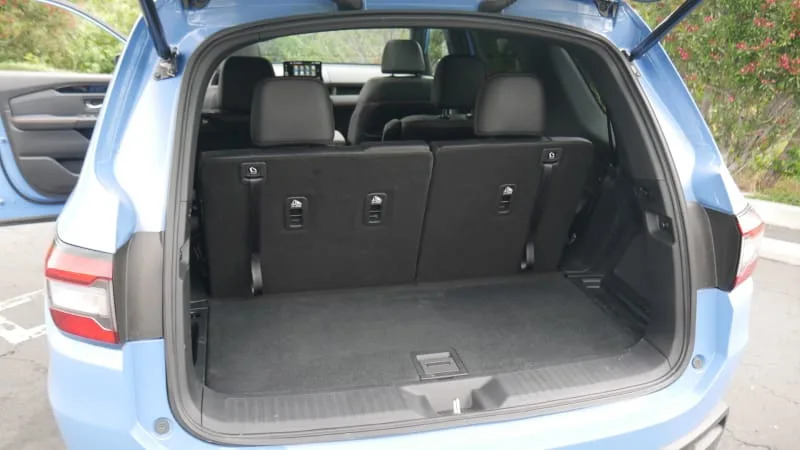

What are the Pilot fuel economy and performance specs?
There is only one engine offered: a 3.5-liter V6 good for 285 horsepower and 262 pound-feet of torque. A 10-speed automatic is standard.
The Pilot can be had in standard front-wheel drive, or with an all-wheel-drive setup dubbed i-VTM4 (standard on TrailSport and Elite, optional all other trims). It’s arguably the most advanced AWD systems in the segment as it provides so-called “torque vectoring”: As much as 70% of the engine’s power can be sent to the rear axle, with 100% of that transferred to one wheel. This is not only beneficial for poor-weather traction, but benefits dry-pavement handling as well. It’s augmented on TrailSport models with a special Trail Torque Logic system and corresponding “Trail” option in the Pilot’s drive mode selection system.
Fuel economy stands at 19 miles per gallon city, 27 mpg highway and 22 mpg combined with front-wheel drive, and 19/25/21 with all-wheel drive. The TrailSport is lower still at 18/23/20.
The Pilot can be outfitted for towing in both 2WD and AWD configurations. 2WD towing capacity is a reasonable 3,500 pounds; opting for AWD raises that cap to 5,000. That’s on par with the segment, but shy of the Kia Telluride (5,500), Ford Explorer (5,600) and Jeep Grand Cherokee L (6,200).
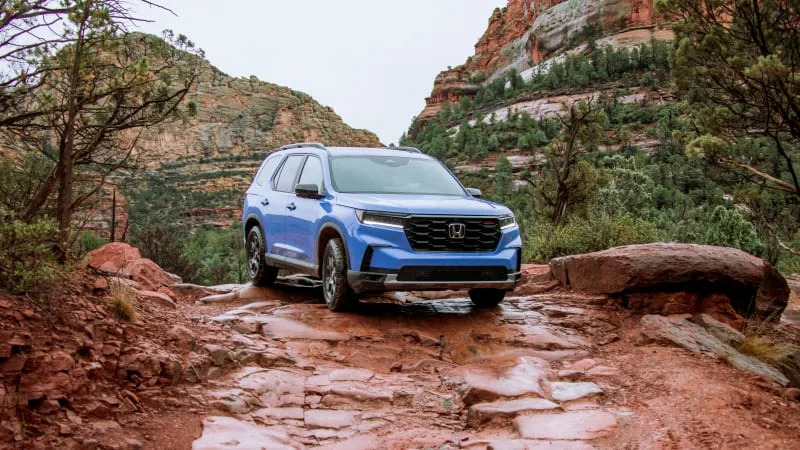

What’s the Pilot like to drive?
Three-row crossovers aren’t normally known for being fun to drive, but the Pilot holds its own for a gussied-up minivan, especially if you opt for the torque-vectoring all-wheel-drive system. Steering precision is better than most, the ride is composed and comfortable and, in general, we enjoy driving it more than everything in the segment except for the sporty Mazda CX-90 and perhaps a fully-loaded Jeep Grand Cherokee L.
Unfortunately, the Pilot’s powertrain could use some work. Its output seems competitive enough, but the resulting acceleration is on the slow side for the segment, and making matters worse are transmission and throttle programming that aren’t adaptable enough to different situations. For instance, we had to engage the Sport driving mode when driving up a series of highway grades because the transmission was otherwise hesitant to drop down and stay in a lower gear. Many drivers won’t even know they have a Sport mode, let alone think to engage it when wanting to go faster than 55 up a hill.
As for the TrailSport, it gets a unique suspension with a 1-inch lift (for a total ground clearance of 8.3 inches) and improved approach and departure angles. The stabilizer bars, spring rates and damper valve tuning are exclusive to the TrailSport, as are a full-size spare and the 18-inch wheels (stamped with TrailSport) wrapped in Continental TerrainContact all-terrain tires. Skid plates protect the oil pan, transmission and gas tank, and Honda says they can each support the entire weight of the Pilot crashing down on a rock. The result is a vehicle that’s remarkably capable for what is fundamentally little more than a minivan, though like the Pathfinder Rock Creek or Explorer Timberline, it’s not a particularly robust off-roader. It’s the sort of SUV that can bring you all the way to the trailhead, but it won’t let you blaze your own. On road, the TrailSport’s off-road tires do reduce steering precision, resulting in more steering corrections being needed on the highway (by you and the lane-centering steering assist system). Road-holding also degrades, but that’s less likely to be noticed in a family hauler. Pleasantly, the ride quality remains perfectly comfortable (unlike the Kia Telluride X-Pro that has the exact same tires) as does road noise. As a result, there’s minimal downside with going with the fun off-road model.
What other Honda Pilot reviews can I read?
Honda Pilot TrailSport Road Test: Outdoor adventure road trip to Oregon
The TrailSport is the Pilot specifically intended for outdoor adventures with its rugged tires and suspension, standard hitch and more functional roof racks. We put it all to the test on an outdoor adventure road trip from southern California to central Oregon.

2023 Honda Pilot First Drive: Broad strokes and broader shoulders
Our first drive of the Pilot, including an off-road drive in the TrailSport and broader details about its design and engineering.
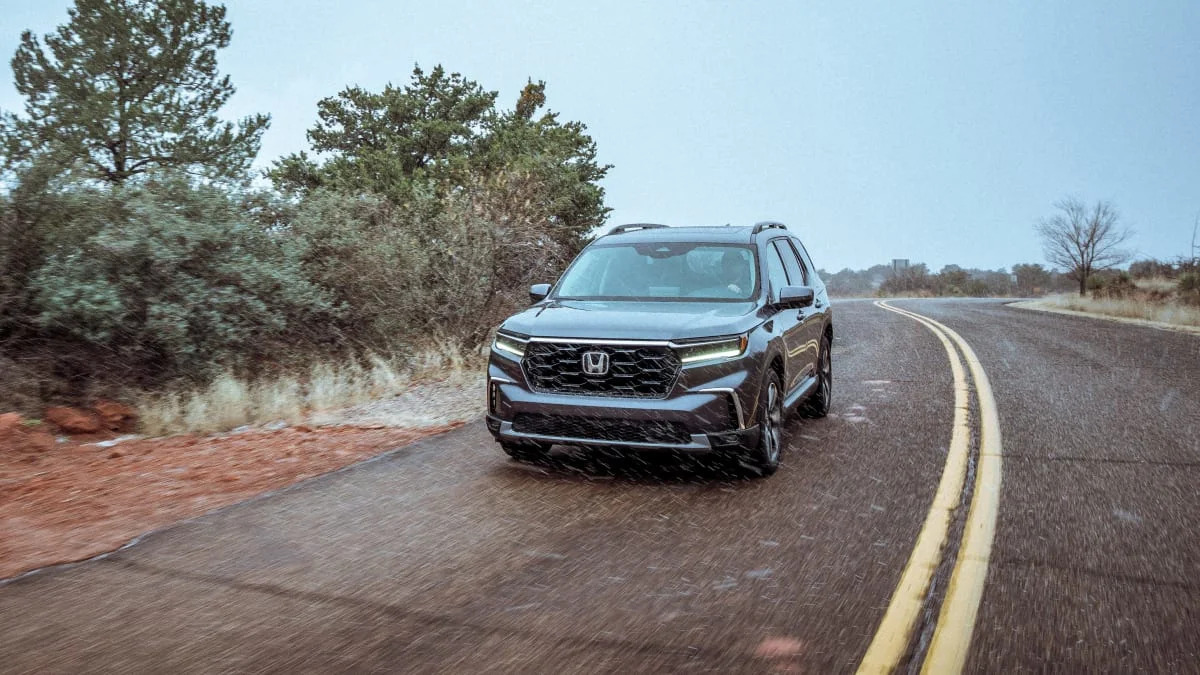
Honda Pilot TrailSport Luggage Test: How much fits behind the third row?
In our real-world testing, we find out how much fits behind the raised third row of the Pilot TrailSport. Despite having just a little less space than other trim levels, it manages to swallow more bags than most vehicles in the segment.

What is the 2024 Pilot price and where is it built?
Pricing starts at $38,465, including the $1,375 destination charge, for a base LX with front-wheel drive. This is competitive pricing for the segment.
For the most part, the trim levels really just represent a stepped increase in equipment and upgraded finishings. That includes the Sport, which may be a bit sportier in appearance, but is really just equipped like the Pilot’s old, mid-grade EX trim. Of course, the TrailSport is quite a bit different, and we think it’s the pick of the litter for its functional and aesthetic upgrades that don’t come with significant downsides. You can read more about its extras in the above driving section, and see the side-by-side visual difference below.
All prices below include the $1,375 destination charge and, unless otherwise noted, are for a front-wheel-drive model. In those cases, all-wheel drive is a $2,100 option.
LX: $37,465
Sport: $40,565
EX-L: $43,775
EX-L with Captain’s Chairs*: $44,075
Touring: $48,275
TrailSport (AWD only): $50,275
Elite (AWD only): $53,885
* For some reason, the EX-L alone offers a choice of seven- or eight-passenger seating since it can be equipped without the hideaway second-row middle seat and therefore with captain’s chairs. That you have to pay extra for it seems nonsensical.
Finally, the Pilot is built in Lincoln, Alabama.

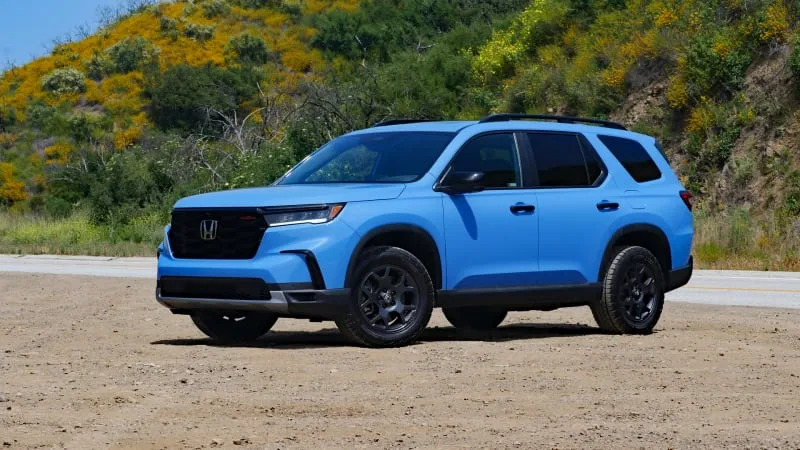
What are the Pilot safety ratings and driver assistance features?
Standard safety equipment includes forward collision warning with automatic emergency braking, a road departure mitigation system, lane-departure warning with lane-keeping assist, adaptive cruise control with speed-adaptive following distance, traffic sign recognition, a driver inattention monitor and automatic high beams. Collectively, these features comprise the basic “Honda Sensing” safety suite. Low speed braking control, cross-traffic monitoring and a parking sensor system are all available on higher trims. Importantly, these are greatly improved over the same systems found in the previous-generation Pilot (especially adaptive cruise control), and although not the strongest in the segment (look to Kia and Hyundai for that) they are now at least average.
The Pilot had not been crash tested by NHTSA at the time of this writing, but the Insurance Institute for Highway Safety named it a Top Safety Pick+ for its best-possible performance in all categories but one: the updated “Moderate overlap front” test where it got a third-best/second-worst rating of “Marginal.” Few vehicles have been to subjected to that test, though.
